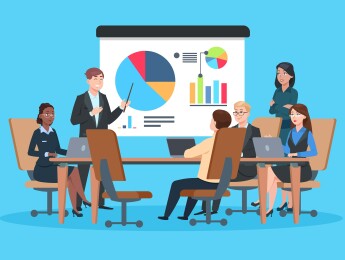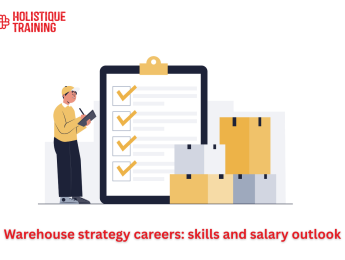- Table of Contents
- What Is Cultural Strategic Thinking?
- How Does Organizational Culture Impact Strategy?
- Why Is Cultural Intelligence Essential for Strategic Leadership?
- What Are the Key Components of Cultural Strategic Thinking?
- How Can Cultural Strategic Thinking Drive Innovation and Adaptability?
- What Challenges Do Organizations Face in Implementing Cultural Strategic Thinking?
- What Are the Future Trends in Cultural Strategic Thinking?
Introduction
In the dynamic landscape of modern business, the fusion of cultural insights with strategic thinking has become a cornerstone for organizations striving to thrive in diverse and globalized environments. This article serves as a comprehensive exploration of cultural strategic thinking, delving into its definition, impact on organizational culture, leadership imperatives, key components, challenges, and future trends.
We embark on a journey to unravel the intricate interplay between culture and strategy, showcasing how organizations can harness cultural intelligence, embrace diversity, drive innovation, and foster adaptability to achieve sustainable success. Join us as we unlock the power of cultural strategic thinking and navigate the complexities of cultural diversity for organizational excellence.
What Is Cultural Strategic Thinking?
Cultural strategic thinking refers to the process of integrating cultural insights and understanding into an organization's strategic planning and decision-making processes. It involves recognizing and leveraging the cultural values, beliefs, norms, and practices that influence how individuals and groups within an organization perceive, interpret, and respond to various situations and challenges.
Cultural strategic thinking goes beyond traditional strategic planning by acknowledging the significant impact that culture has on organizational dynamics, employee behavior, customer preferences, and market trends. It involves a deep understanding of not only the external cultural contexts in which an organization operates but also the internal cultural dynamics that shape its identity, values, and goals.
In essence, cultural strategic thinking involves asking questions such as:
- How do cultural factors shape our stakeholders' expectations and perceptions?
- What cultural values and norms are driving decision-making processes within our organization?
- How can we leverage cultural diversity and inclusivity to drive innovation and competitive advantage?
- What cultural barriers or challenges might hinder our strategic initiatives, and how can we address them effectively?
Ultimately, cultural strategic thinking aims to align organizational strategy with cultural insights to enhance performance, foster inclusivity, drive innovation, and achieve sustainable success in diverse and dynamic environments.
How Does Organizational Culture Impact Strategy?
Organizational culture significantly impacts strategy in various ways:
- Decision-making processes: Organizational culture shapes how decisions are made, including the level of risk tolerance, the importance of data-driven insights, and the role of hierarchy in decision-making. A culture that values innovation may encourage more risk-taking in strategic choices, while a conservative culture may prioritize stability and incremental changes.
- Strategic alignment: A strong organizational culture can align employees' behaviors and actions with strategic objectives. When employees understand and embrace the core values and mission of the organization, they are more likely to contribute effectively to strategic initiatives and goals.
- Adaptability: Culture influences an organization's ability to adapt to change and respond to external threats or opportunities. A culture that values learning, agility, and openness to new ideas is more likely to adjust its strategies in response to market shifts or industry trends.
- Employee engagement and motivation: Organizational culture plays a crucial role in shaping employee attitudes, motivation, and commitment to strategic goals. A positive culture that promotes collaboration, recognition, and empowerment can drive higher levels of employee engagement and performance in strategy execution.
- Customer experience: Culture influences how employees interact with customers and how customer-centric strategies are implemented. A customer-focused culture fosters empathy, responsiveness, and a deep understanding of customer needs, leading to enhanced customer satisfaction and loyalty.
- Innovation: Cultural norms and values can either encourage or stifle innovation within an organization. A culture that values creativity, experimentation, and knowledge sharing creates an environment conducive to innovation, driving strategic differentiation and competitive advantage.
Overall, organizational culture serves as a foundation that shapes the strategic direction, execution, and outcomes of an organization's strategies. Understanding and leveraging cultural dynamics can lead to more effective strategy formulation, implementation, and adaptation in a rapidly changing business landscape.
Why Is Cultural Intelligence Essential for Strategic Leadership?
Cultural intelligence (CQ) is essential for strategic leadership for several reasons:
- Global Perspective: In an increasingly interconnected world, organizations often operate across diverse cultural contexts. Leaders with high CQ can navigate cultural differences effectively, understand global market trends, and capitalize on international opportunities.
- Effective Communication: Cultural intelligence enables leaders to communicate and collaborate across cultural boundaries. They can adapt their communication styles, use appropriate language and gestures, and build rapport with diverse stakeholders, fostering trust and cooperation.
- Decision-making: Strategic leaders with high CQ can make more informed and culturally sensitive decisions. They consider cultural nuances, values, and perspectives when evaluating strategic options, mitigating risks, and capitalizing on cultural strengths for competitive advantage.
- Team Effectiveness: CQ is crucial for leading diverse teams effectively. Culturally intelligent leaders can create inclusive environments where team members feel valued, respected, and empowered to contribute their unique perspectives and talents, leading to higher team performance and innovation.
- Change Management: Cultural intelligence is vital during periods of organizational change or transformation. Leaders with CQ can navigate cultural resistance, manage cultural clashes, and facilitate cultural integration to ensure smoother transitions and successful change initiatives.
- Brand Reputation: Leaders with high CQ uphold and promote cultural sensitivity, diversity, and inclusion within their organizations. This enhances the organization's reputation, builds positive relationships with diverse stakeholders, and attracts top talent, customers, and partners.
- Strategic Partnerships: Culturally intelligent leaders can form strategic partnerships and alliances with organizations from different cultural backgrounds. They understand how cultural differences impact collaboration, negotiation, and relationship-building, leading to successful partnerships and mutual benefits.
Cultural intelligence is essential for strategic leadership as it enables leaders to navigate complex cultural landscapes, foster inclusive environments, make informed decisions, lead diverse teams effectively, manage change, build positive relationships, and drive organizational success in multicultural settings.
What Are the Key Components of Cultural Strategic Thinking?
The key components of cultural strategic thinking encompass a range of factors that organizations need to consider when integrating cultural insights into their strategic planning processes. These components include:
- Cultural Awareness:
- Understanding the cultural backgrounds, values, beliefs, and norms of stakeholders, including employees, customers, suppliers, and communities.
- Recognizing cultural diversity and its impact on organizational dynamics, decision-making, and relationships.
- Strategic Alignment:
- Aligning organizational values, mission, and goals with cultural insights to ensure strategic initiatives are culturally appropriate and resonate with stakeholders.
- Ensuring that cultural considerations are integrated into strategic planning processes, including goal setting, resource allocation, and performance metrics.
- Cultural Intelligence (CQ):
- Developing cultural intelligence among leaders and employees to navigate cultural differences, communicate effectively, and build relationships across diverse cultural contexts.
- Leveraging cultural intelligence to enhance strategic decision-making, innovation, and adaptability in multicultural environments.
- Inclusive Leadership:
- Fostering inclusive leadership practices that promote diversity, equity, and inclusion within the organization.
- Empowering diverse voices, perspectives, and contributions in strategic discussions and decision-making processes.
- Cross-Cultural Collaboration:
- Promoting collaboration and teamwork across cultural boundaries to leverage diverse talents, expertise, and perspectives.
- Facilitating cross-cultural communication, trust-building, and relationship management to drive strategic initiatives and achieve shared goals.
- Cultural Competence Development:
- Investing in training and development programs to enhance employees' cultural competence, sensitivity, and awareness.
- Providing resources and support for employees to acquire knowledge, skills, and behaviors that promote effective cross-cultural interactions and collaborations.
- Ethical and Social Responsibility:
- Integrating ethical considerations and social responsibility into cultural strategic thinking, ensuring that strategies align with ethical standards, respect cultural values, and contribute positively to communities and society.
- Addressing social and environmental impacts of strategic decisions, fostering sustainability, and promoting ethical leadership practices.
Table 1: Thekey components of cultural strategic thinking
Key Components | Description |
Cultural Awareness | Understanding the cultural backgrounds, values, beliefs, and norms of stakeholders, including employees, customers, suppliers, and communities. Recognizing cultural diversity and its impact on organizational dynamics, decision-making, and relationships. |
Strategic Alignment | Aligning organizational values, mission, and goals with cultural insights to ensure strategic initiatives are culturally appropriate and resonate with stakeholders. Ensuring that cultural considerations are integrated into strategic planning processes, including goal setting, resource allocation, and performance metrics. |
Cultural Intelligence (CQ) | Developing cultural intelligence among leaders and employees to navigate cultural differences, communicate effectively, and build relationships across diverse cultural contexts. Leveraging cultural intelligence to enhance strategic decision-making, innovation, and adaptability in multicultural environments. |
Inclusive Leadership | Fostering inclusive leadership practices that promote diversity, equity, and inclusion within the organization. Empowering diverse voices, perspectives, and contributions in strategic discussions and decision-making processes. |
Cross-Cultural Collaboration | Promoting collaboration and teamwork across cultural boundaries to leverage diverse talents, expertise, and perspectives. Facilitating cross-cultural communication, trust-building, and relationship management to drive strategic initiatives and achieve shared goals. |
Cultural Competence Development | Investing in training and development programs to enhance employees' cultural competence, sensitivity, and awareness. Providing resources and support for employees to acquire knowledge, skills, and behaviors that promote effective cross-cultural interactions and collaborations. |
Ethical and Social Responsibility | Integrating ethical considerations and social responsibility into cultural strategic thinking, ensuring that strategies align with ethical standards, respect cultural values, and contribute positively to communities and society. Addressing social and environmental impacts of strategic decisions, fostering sustainability, and promoting ethical leadership practices. |
By addressing these key components, organizations can foster a culture of cultural strategic thinking that values diversity, inclusivity, cultural sensitivity, and ethical leadership, leading to improved strategic outcomes, stakeholder engagement, and long-term organizational success.
How Can Cultural Strategic Thinking Drive Innovation and Adaptability?
Cultural strategic thinking can drive innovation and adaptability in several ways:
- Diverse Perspectives: By incorporating cultural diversity into strategic thinking, organizations can access a wide range of perspectives, ideas, and approaches to problem-solving. Different cultural backgrounds bring unique insights and experiences that can inspire innovative solutions and strategies.
- Creativity Catalyst: Cultural diversity can act as a catalyst for creativity within teams and organizations. Exposure to diverse cultural perspectives stimulates creativity by challenging assumptions, encouragingout-of-the-box thinking, and fostering a culture of curiosity and exploration.
- Cross-Cultural Collaboration: Cultural strategic thinking promotes collaboration across cultural boundaries, bringing together individuals with diverse skills, knowledge, and perspectives. Collaborative efforts involving team members from different cultural backgrounds often lead to innovative solutions that blend various insights and expertise.
- Market Adaptation: Cultural strategic thinking enables organizations to adapt their products, services, and strategies to diverse cultural contexts and changing market dynamics. Understanding cultural preferences, values, and trends allows organizations to tailor their offerings effectively, capture new markets, and stay competitive.
- Agility and Flexibility: Cultural intelligence and strategic thinking help organizations become more agile and flexible in response to cultural shifts, market changes, and unforeseen challenges. Leaders and teams with cultural competence can pivot quickly, adjust strategies, and seize emerging opportunities, enhancing organizational adaptability.
- Inclusive Innovation: Cultural strategic thinking promotes inclusive innovation by ensuring that diverse voices and perspectives are included in the innovation process. Inclusive innovation practices lead to solutions that address a broader range of needs, preferences, and challenges, driving customer satisfaction and market relevance.
- Learning and Continuous Improvement: Cultural strategic thinking fosters a culture of learning, experimentation, and continuous improvement. Organizations that value cultural insights embrace feedback, embrace failure as a learning opportunity, and adapt their strategies based on evolving cultural and market realities.
In essence, cultural strategic thinking fuels innovation and adaptability by leveraging diverse perspectives, fostering creativity and collaboration, customizing strategies to cultural contexts, promoting agility, embracing inclusivity, and fostering a culture of continuous learning and improvement. By integrating cultural considerations into strategic thinking, organizations can unlock new opportunities, drive growth, and stay resilient in an ever-changing global landscape.
What Challenges Do Organizations Face in Implementing Cultural Strategic Thinking?
Organizations may encounter several challenges when implementing cultural strategic thinking:
- Cultural Complexity: Cultural diversity brings complexity to strategic decision-making. Understanding and navigating diverse cultural norms, values, and communication styles can be challenging, especially in global or multicultural environments.
- Resistance to Change: Cultural strategic thinking often requires cultural transformation and mindset shifts within the organization. Resistance to change from employees, leaders, or stakeholders who are accustomed to traditional ways of thinking and operating can impede the adoption of cultural strategic initiatives.
- Communication Barriers: Effective cross-cultural communication is essential for cultural strategic thinking. However, language barriers, misinterpretation of cultural cues, and differences in communication styles can hinder clear communication and collaboration among diverse teams and stakeholders.
- Implicit Bias: Unconscious biases based on cultural stereotypes or prejudices can influence decision-making and perceptions within the organization. Overcoming implicit biases and fostering inclusive practices is crucial for implementing cultural strategic thinking effectively.
- Resource Constraints: Implementing cultural strategic thinking may require investments in training, development programs, cross-cultural initiatives, and diversity initiatives. Resource constraints, budget limitations, and competing priorities can pose challenges in allocating resources for cultural initiatives.
- Leadership Commitment: Cultural strategic thinking requires strong leadership commitment and support. Leaders must champion cultural diversity, inclusivity, and cultural intelligence, set the tone for cultural change, and ensure alignment between cultural values and strategic goals.
- Measurement and Evaluation: Measuring the impact of cultural strategic thinking initiatives can be complex. Identifying relevant metrics, tracking progress, and evaluating the effectiveness of cultural strategies in achieving desired outcomes can pose measurement challenges.
- Globalization Challenges: Organizations operating globally face additional challenges such as navigating cultural differences across borders, adapting strategies to diverse markets, and managing cultural integration in mergers or acquisitions.
Addressing these challenges requires a holistic approach that includes cultural competence development, leadership commitment, effective communication strategies, inclusive practices, ongoing evaluation, and a supportive organizational culture that values diversity and cultural intelligence.
What Are the Future Trends in Cultural Strategic Thinking?
Future trends in cultural strategic thinking are likely to revolve around the following areas:
- Digital Cultural Intelligence: With the increasing digitization of businesses and globalization, there will be a growing focus on digital cultural intelligence. This involves understanding how digital platforms, technologies, and communication channels impact cultural interactions, customer preferences, and market dynamics.
- Virtual Collaboration and Remote Work Culture: The rise of remote work and virtual collaboration due to technological advancements and global events like the COVID-19 pandemic will influence cultural strategic thinking. Organizations will need to develop strategies for fostering a cohesive and inclusive remote work culture across diverse cultural backgrounds.
- Ethical and Sustainable Cultural Practices: Future trends will emphasize the importance of ethical and sustainable cultural practices. Organizations will integrate ethical considerations, environmental sustainability, and social responsibility into their cultural strategic thinking, aligning cultural values with broader societal and environmental goals.
- AI and Data Analytics for Cultural Insights: Artificial intelligence (AI) and data analytics will play a significant role in generating cultural insights and informing strategic decision-making. AI-powered tools can analyze cultural data, identify trends, predict consumer behavior, and provide actionable recommendations for cultural strategy development.
- Cultural Innovation Hubs: Organizations may establish cultural innovation hubs or centers of excellence dedicated to fostering creativity, collaboration, and cultural intelligence. These hubs will serve as incubators for innovative cultural strategies, cross-cultural collaborations, and learning initiatives.
- Cultural Diversity in Leadership: There will be a continued emphasis on promoting cultural diversity in leadership positions. Organizations will prioritize diversity and inclusion efforts, develop diverse leadership pipelines, and empower leaders with strong cultural intelligence to drive cultural strategic thinking.
- Adaptive Cultural Strategies: Cultural strategic thinking will evolve to become more adaptive and responsive to rapid changes in cultural, technological, and market trends. Organizations will adopt agile cultural strategies that can quickly adapt to emerging opportunities and challenges in dynamic environments.
- Cross-Industry Collaboration: Collaboration across industries and sectors will increase to leverage diverse perspectives, expertise, and resources. Cultural strategic alliances and partnerships will emerge to address complex societal challenges, drive innovation, and create shared value for diverse stakeholders.
- Cultural Transformation and Change Management: Organizations will invest in cultural transformation and change management initiatives to embed cultural strategic thinking into their DNA. This involves fostering a culture of continuous learning, adaptation, and resilience to thrive in an ever-changing global landscape.
By embracing these future trends in cultural strategic thinking, organizations can unlock new opportunities, drive innovation, build inclusive cultures, and achieve sustainable success in diverse and dynamic environments.
Conclusion
In summary, cultural strategic thinking is a powerful tool for organizations in today's globalized environment. By integrating cultural insights into strategy, organizations can drive innovation, foster inclusivity, and achieve sustainable success. Despite challenges, investing in cultural intelligence and embracing future trends like digital intelligence and ethical sustainability can pave the way for organizational excellence in the ever-evolving business landscape.

























